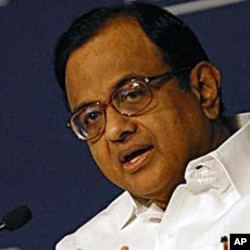Two decades ago, India opened up its tightly regulated economy, unleashing a wave of reforms that transformed the country and put it in the league of the world's fastest growing economies. But many consider the job only partially complete and say the South Asian country needs to bridge the gap between a prosperous middle class and the millions of people who still grapple with poverty.
Dramatic shift
Rajeev Nanda, a software professional, was among a wave of young people who migrated to the United States in the 1980s, because of a lack of job opportunities at home. In 2001, a decade after India opened its socialist-style economy, he returned to establish an office in Bangalore for the U.S.-based company that employed him.
Nanda found a country dramatically different from the one he had left 12 years before.
“When we went, it was a one-way ticket [to the U.S.," explained Nanda. "Then the economy opened up. The opportunities created a different mindset. Suddenly there was a lot of hope and lot of excitement in the air.”
Financial woes
The liberalization drive launched in 1991 came at a time when India was confronting a crisis. It was on the verge of defaulting on its international debt.
Prime Minister Manmohan Singh - then the country’s finance minister - lifted restrictions on foreign investors, relaxed stifling controls on domestic industry and slashed taxes.
The results were soon evident. India’s economy became the world’s second fastest-growing economy, after China. Led by a thriving information-technology sector, the services sector boomed. Manufacturing industries expanded. Exports flourished. A huge middle class emerged.
Economic boom
The head of the Federation of Indian Chambers of Commerce and Industry, Rajiv Kumar, says the unshackling of the private sector created the economic boom.
“The most important thing in my view is to have freed the Indian entrepreneurial spirit, which is its traditional strength. It had been chained and caged prior to 1991 in the ideology of central planning and socialism etc,” Kumar said.
But, 20 years later, analysts say India’s economic revolution is only partially complete. And, some people worry that it is running out of steam.
For years, investors have waited for a second wave of reforms to open up sectors which are still tightly regulated, such as retail and insurance. Businesses grapple with lack of infrastructure, as everything from power generation to the transportation network falls short. Several Indian companies are investing overseas, rather than at home where they are deterred by problems such as acquiring land for factories.
Unequal growth
But economists say even more pressing is the problem of unequal growth. While one half of the country prospers, the other half continues to grapple with poverty. In the cities, swank, gated residential complexes and gleaming shopping malls contrast with sprawling urban slums.
Poverty is rampant in many backward, rural regions. A little more than 40 percent of the people - about 450 million - live on less than $2 a day.
Top Indian officials are confident the problem can be addressed by even faster growth. Among them is Home Minister P. Chidambaram, who was formerly finance minister.
“Our biggest failure is that the pace of reduction of poverty has not been fast enough, that the growth of employment has not been fast enough," Chidambaram said. "The pace of reduction of poverty must pick up and that can only happen if growth averages over eight percent and is sustained at nine percent for several years.”
But there are worries that brisk economic growth may not be enough to address problems such as lack of access to schooling and health care for millions of Indians. Rates of malnourishment and infant mortality are among the worst in the world. Millions of children are still unschooled.
Effective governance
A top Indian economist, Swaminathan Aiyar, blames lack of effective governance for such problems.
“It is not enough to say there is some economic growth. I mean what is the condition of your schools? What is the condition of your public health? What is the condition of government services in general? That is the biggest problem that is crying out,” noted Aiyar.
Analysts also say that, in the past year, economic issues have been put on the back burner as the government focuses its energies on fighting allegations of huge official corruption. They say this has led to a policy paralysis in the government.
New focus
Minister Chidambaram says the country needs to put the focus back on the economy to realize its full potential.
“The center stage must once again be restored to growth, to change, to reforms, better governance. So the blips you see today in declining investment or more foreign outward investment, all these can be resolved…..and then outpace even China, that’s not impossible, people are beginning to talk about outpacing China,” Chidambaram said.
Rajeev Nanda says that, two decades after liberalization, most professionals would rather stay in India than migrate to Western countries.
“In the last few years, I have seen even a reverse, where people do not want to go. They are simply having a better life, better opportunities right here,” Nanda said.
Economists say the challenge in the coming years will be to bridge the gap between the middle class and the poor, so that those living now in urban slums and the countryside can echo the same sentiment.


















